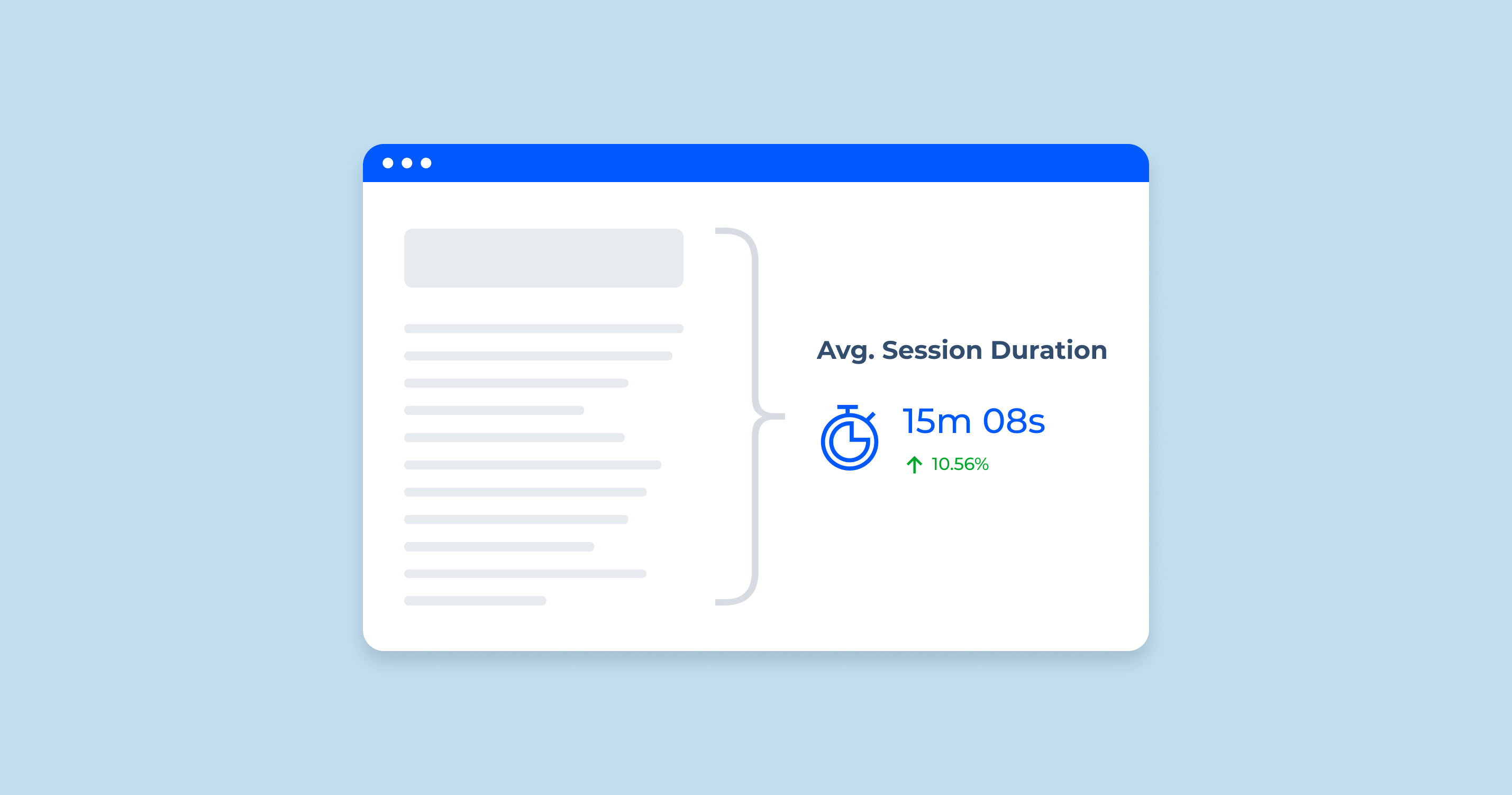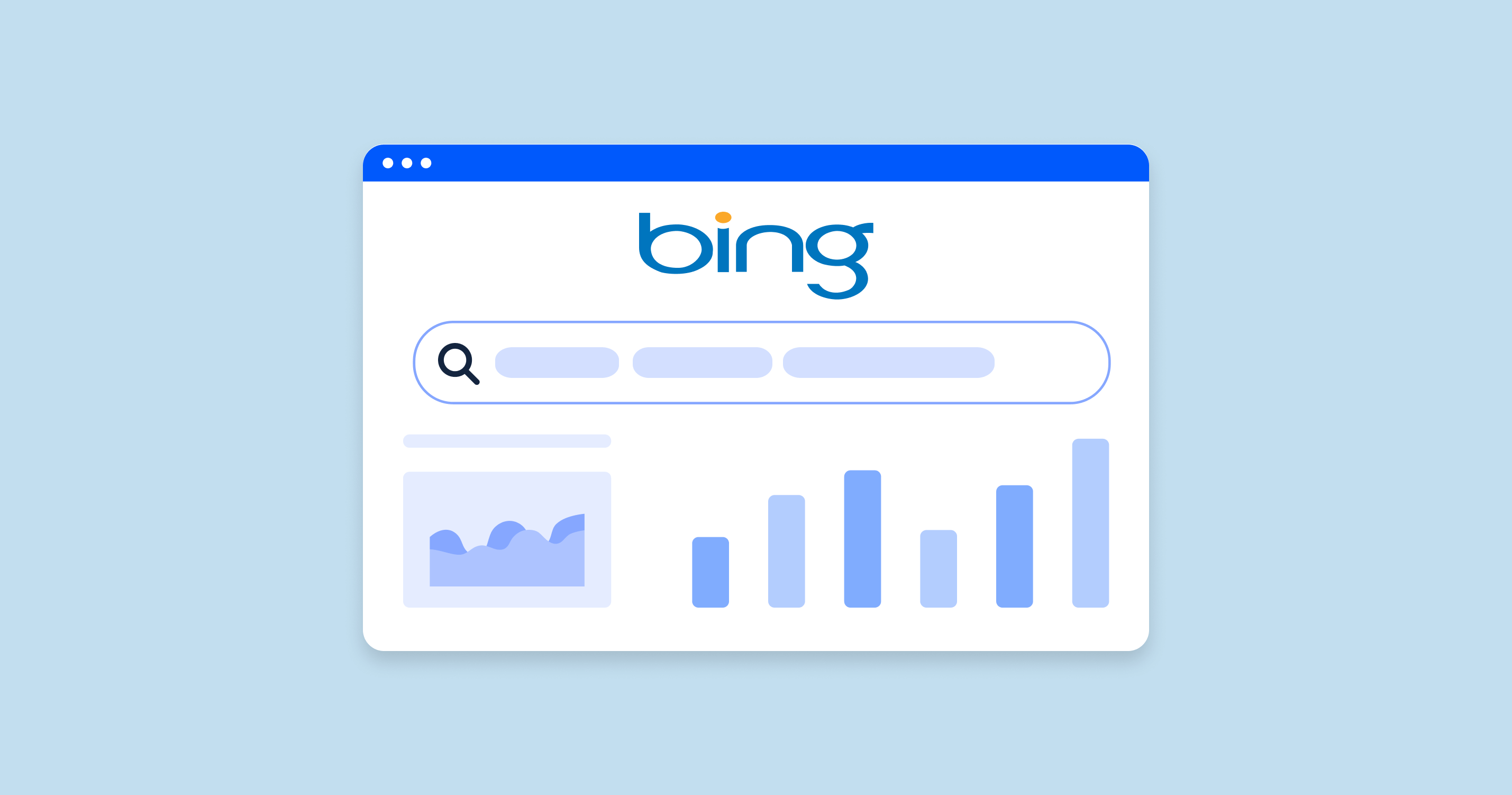What Is Dwell Time in SEO?
Dwell time, in the context of Search Engine Optimization (SEO), refers to the amount of time a user spends on a web page after clicking on its link from the search engine results page (SERP) and before returning back to the SERPs. It’s essentially a metric that gauges user engagement and the relevancy of your content to the searcher’s query.
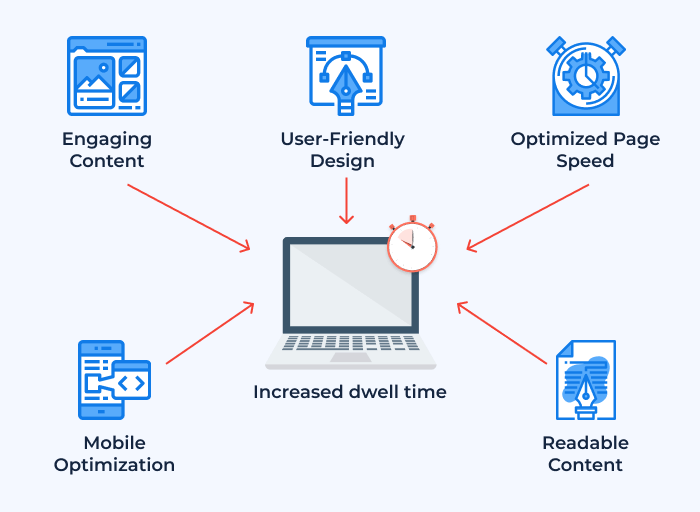
Imagine this scenario: You search for a topic on a search engine, click on one of the results, quickly realize it’s not providing the information you’re looking for, and then hit the back button. Your dwell time for that webpage would be very short, indicating that the page may not have been relevant to your search or wasn’t engaging enough to keep you there.
Conversely, if you click on a search result and spend several minutes reading the content, engaging with it, and then eventually return to the SERPs or navigate elsewhere, the dwell time would be longer. This indicates that you found value or relevance in the page.
Why does dwell time matter in SEO? Search engines, particularly Google, aim to provide users with the most relevant and high-quality search results ever for their queries. If a webpage consistently shows short dwell times, it might signal to search engines that the content isn’t adequately satisfying user intent. On the other hand, longer dwell times can be an indicator of content relevancy and quality, potentially leading to higher rankings in the SERPs.
However, it’s essential to note that dwell time is just one measure of many metrics and signals that search engines use to determine page quality and relevance. While it can provide insights into user satisfaction, it should be looked at in conjunction with other metrics like bounce rate, time on page, and overall user engagement.
Example of Dwell Time in Practice
To truly grasp the concept of dwell time, let’s walk through a practical example.
Jane’s Quest for a Chocolate Cake Recipe
Jane is craving chocolate cake. She doesn’t just want any recipe; she’s looking for a rich, moist chocolate cake that doesn’t require any exotic ingredients. So, she heads over to her favorite search engine and types in “easy moist chocolate cake recipe.”
Scenario 1: The Disappointing Recipe Blog
- Jane clicks on the first result titled “The Ultimate Chocolate Cake Recipe.”
- The page takes a bit too long to load, but she waits. When it finally does, she’s bombarded with pop-up ads and a long story about the author’s childhood memories associated with chocolate cake.
- After scrolling for what seems like forever and still not finding the actual recipe, Jane gets frustrated. She decides she doesn’t have the patience for this and clicks the back button.
- Dwell Time: Very short, perhaps less than 30 seconds.
Scenario 2: The Perfect Recipe Platform
- Still on her quest, Jane clicks on the third result, which reads “Easy and Moist Chocolate Cake – Ready in 40 Minutes!”
- The page loads quickly, presenting her with a concise introduction followed immediately by a clear, easy-to-follow recipe. As she reads, she finds helpful tips like substitution options for specific ingredients and a video tutorial.
- She spends about 7 minutes on the page, reading the recipe, watching the video, and even browsing the comments for additional insights.
- Feeling satisfied, she bookmarks the page and heads to her kitchen to get started.
- Dwell Time: Approximately 7 minutes.
The SEO Implication
From an SEO perspective, Scenario 1’s website may experience a decline in rankings over time if many users like Jane have short dwell times. The search engine might interpret the short dwell times as a signal that the content isn’t meeting the users’ needs or is of low quality.
In contrast, Scenario 2’s website, which garners longer dwell times, might be seen as offering valuable and relevant content. Over time, if this trend continues with other users, the site could see improved rankings.
ohn Mueller has said that he doesn’t think dwell time is a direct ranking factor on Twitter. However, he has also said that it’s important to create high-quality content that people will want to engage with. If people are spending time on your account on tweets, it’s a good sign that they find them valuable.
In a 2020 tweet, Mueller said:
This suggests that dwell time can be an indirect ranking factor, as it can signal to Twitter that your content is high-quality and engaging.
Mueller has also said that Twitter is focused on measuring engagement metrics such as likes, retweets, and replies. These metrics are a better indication of how people are interacting with your content than dwell time alone.
In a 2021 tweet, Mueller said:
So, while dwell time may not be a direct ranking factor on Twitter, it’s still important to write and create high-quality content that people will want to engage with. If you can do that, you’ll be well on your way to improving your ranking and reach.
Dwell Time vs. Bounce Rate vs. Time on Page
In the realm of SEO and website analytics, understanding user behavior is pivotal. Three commonly referenced metrics that provide insights into user interactions are Dwell Time, Bounce Rate, and Time on Page. While they might seem similar or even interchangeable, they have distinct differences and offer unique perspectives on user engagement. Let’s delve into each one to better understand their significance.
Dwell Time
Dwell Time is the amount of time a visitor spends on a webpage after clicking on its link from the search engine results page (SERP) before returning back to the SERPs. It serves as an intermediary metric between click-throughs from the SERP and potential interactions (or lack thereof) on the visited page.
Why is it important? Dwell time can provide insights into the relevance and quality of your content. A short dwell time might indicate that visitors didn’t find what they were looking for or that the content wasn’t engaging enough. Conversely, a longer dwell time often suggests that visitors found the content valuable and took the time to consume it.
However, Dwell Time alone can’t paint the full picture. It’s the interplay of this metric with others like Bounce Rate and Time on Page that offers a more holistic view of user engagement.
Bounce Rate
Bounce Rate is the percentage of visitors who navigate away from the site after viewing only one page. In other words, these visitors didn’t interact further with the website beyond their initial landing page.
This metric is crucial because a high bounce rate can indicate several things:
- The content wasn’t relevant to the visitor.
- The website had usability issues.
- There were technical problems, like slow page load times.
- The visitor got exactly what they needed from the landing page and didn’t need to explore further.
However, it’s essential to interpret Bounce Rate in context. For instance, a high bounce rate on a contact information page might be perfectly normal, while the same rate on a product page could be concerning.
Time on Page
Time on Page refers to the average amount of time all users spend on a particular page. Unlike Dwell Time, which focuses on the time spent before returning to the SERPs, Time on Page encompasses the duration of a user’s visit regardless of session duration of their subsequent actions.
This metric is vital for understanding user engagement with specific content. A longer Time on Page often indicates that the content was engaging and kept the visitor’s attention. In contrast, a short Time on Page might suggest the opposite.
However, as with all metrics, context is crucial. For example, a long Time on Page for an article is a good sign, implying thorough reading. But the same duration on a checkout page might indicate confusion or difficulties in the purchasing process.
Does Dwell Time Make Sense as a Ranking Factor?
In the ongoing quest to understand and optimize for search engine ranking factors, the question of dwell time’s importance frequently arises. As with many aspects of SEO, the answer isn’t necessarily black and white. Let’s delve into the logic and rationale behind the debate on whether dwell time should be considered a significant ranking factor.
The Case FOR Dwell Time as a Ranking Factor:
- User Satisfaction Indication: Dwell time, at its core, measures user engagement. A longer dwell time can imply that the visitor found the content relevant and engaging, suggesting that the search engine successfully delivered on the user’s query. In contrast, a short dwell time might indicate dissatisfaction or irrelevance.
- Content Quality Assessment: High-quality content tends to keep readers engaged for longer periods. If dwell time is longer on average, it might indicate that the content is thorough, well-researched, and effectively addresses the search query.
- Behavioral Insight: Search engines aim to provide the best user experience possible. By analyzing patterns in dwell time, search engines can glean insights into user behavior and preferences, further refining their algorithms to better serve users in future searches.
The Case AGAINST Dwell Time as a Ranking Factor:
- Potential for Misinterpretation: Not every short dwell time indicates poor content. A user might find their answer immediately, leading to a shorter dwell time, but that doesn’t mean the content wasn’t valuable or relevant.
- Variability Across Industries and Content Types: Different types of content can naturally result in various dwell times. For instance, a detailed research article might have a longer dwell time than a quick FAQ page. Using dwell time as a blanket ranking factor across all content types might not provide an accurate representation of content value.
- Potential for Manipulation: Like many metrics, if dwell time becomes a known prominent ranking factor, there’s potential for manipulation. Websites might employ tactics to artificially inflate dwell times, leading to a skewed representation of user engagement.H2 How to Calculate Dwell Time
How to Increase Dwell Time
Increasing dwell time is crucial not just for better rankings in search engines, but also for providing users with a satisfactory experience. Here are some strategies to ensure that your visitors remain engaged with your content:
Hook Readers in the Intro
The introduction of any piece of content sets the stage for the reader’s experience. A compelling intro can:
- Capture the reader’s attention immediately.
- Provide a clear idea of what the content will cover.
- Convince the reader of the content’s relevance to their query.
To craft a captivating intro:
- Start with a relatable statement or question.
- Use powerful and emotive language.
- Provide a brief overview or teaser of what the article will cover.
Nail the Search Intent
Understanding and meeting the search intent is fundamental. Ensure your content:
- Addresses the specific question or need that brought the user to your page.
- Provides actionable insights or answers.
- Is formatted in a way that makes sense for the query (e.g., listicles for “how-to” queries, detailed articles for in-depth research).
Produce Longer (and Better) Content
Longer content tends to rank better and can keep users engaged for extended periods. However, length should not compromise quality. Ensure that your content:
- Is comprehensive and covers a topic thoroughly.
- Isn’t redundant or filled with fluff.
- Remains structured and organized for easy navigation.
Don’t Use Clickbait
Clickbait titles might increase click-through rates, but they can adversely affect dwell time. When content doesn’t match the user’s expectations set by a sensationalized title:
- Users become frustrated.
- Trust in the website diminishes.
- It sends negative signals to search engines about the content’s relevance and quality.
Cover Relevant Subtopics
By covering related subtopics within your content, you can:
- Provide a more comprehensive answer to user queries.
- Keep users engaged as they find more related information.
- Boost your content’s authority on the subject matter.
Keep Your Content Up to Date
Outdated content can lead to decreased trust and engagement. Regularly:
- Update statistics or figures.
- Refresh content with new findings or developments.
- Revise any outdated advice or recommendations.
Add Internal Links to Useful Resources
Internal linking serves multiple purposes:
- It guides readers to other relevant content on your site, keeping them engaged longer.
- Helps in distributing page authority throughout your website.
- Makes it easier for search engines to crawl and index your site.
Ensure your internal links:
- Are contextually relevant.
- Use descriptive anchor text.
- Do not overwhelm the reader with excessive links.
Prioritize User Experience
A stellar user experience goes beyond content. Ensure:
- Fast page load times.
- Mobile optimization.
- Intuitive navigation.
- Clear CTAs (Call to Action).
Make Your Content Engaging
To hold the reader’s attention:
- Use visuals like images, infographics, and videos.
- Incorporate storytelling elements.
- Make data and statistics more digestible with charts and graphs.
Improve User Engagement With Sitechecker
User engagement is pivotal for any website’s success, and with an array of tools available, it can be overwhelming to decide which one to adopt. One such tool that’s been making waves in the digital space is Sitechecker. Let’s delve into how it can offer actionable insights and solutions without coming off as a mere sales pitch:
Understanding Sitechecker
Sitechecker is not just another analytics tool; it’s designed to give a comprehensive view of your website’s health and performance. By holistically evaluating various parameters, it provides actionable feedback to elevate user engagement.
Key Features Beneficial for User Engagement:
- On-page SEO Checker: This feature scans your web pages for issues that might deter user engagement. It provides insights on meta tags, content quality, and keyword usage, ensuring that your content is optimized for both users and search engines.
- Website Speed Test: Slow loading pages can be a significant deterrent for users. Sitechecker’s speed test gives a breakdown of elements affecting your site’s load time, enabling swift troubleshooting.
- Backlink Checker: Understanding who links to you and how can influence your site’s authority and trustworthiness. With this tool, you can gauge the quality of your backlinks and their potential impact on user engagement.
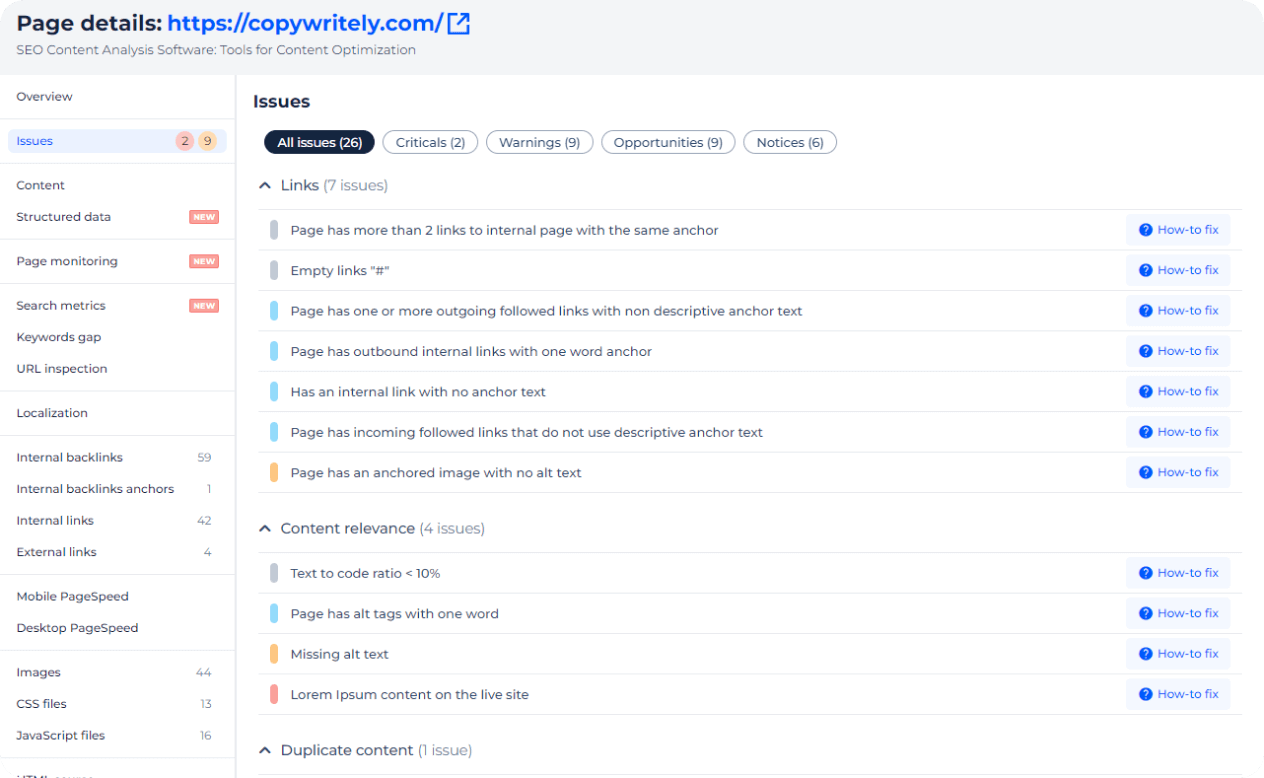
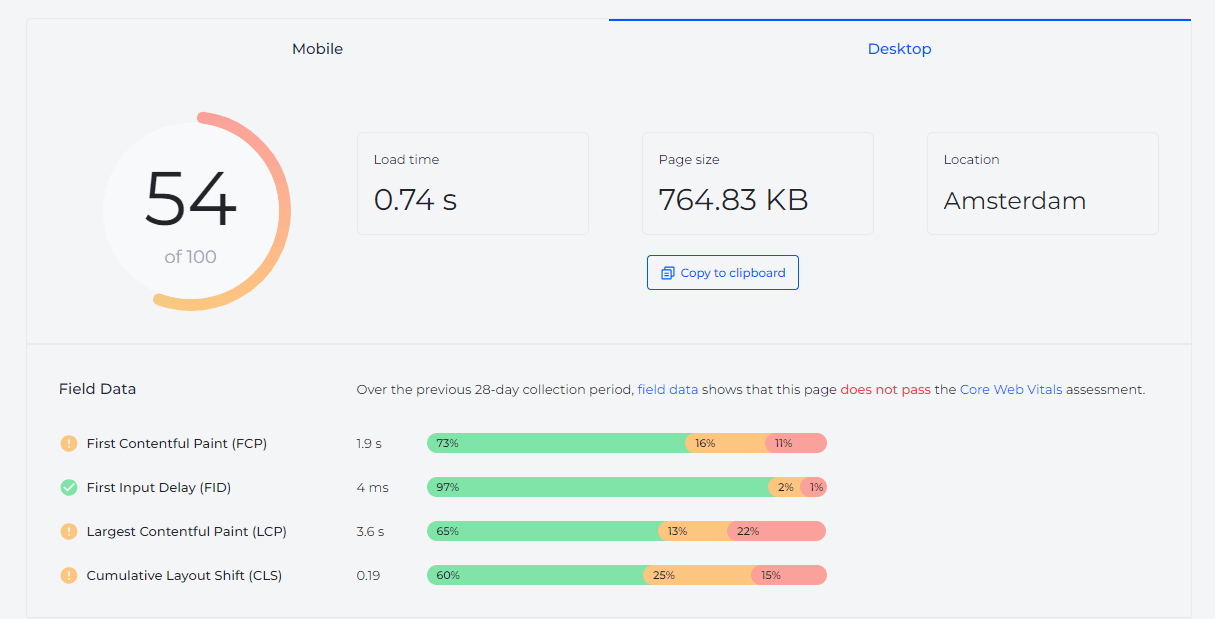
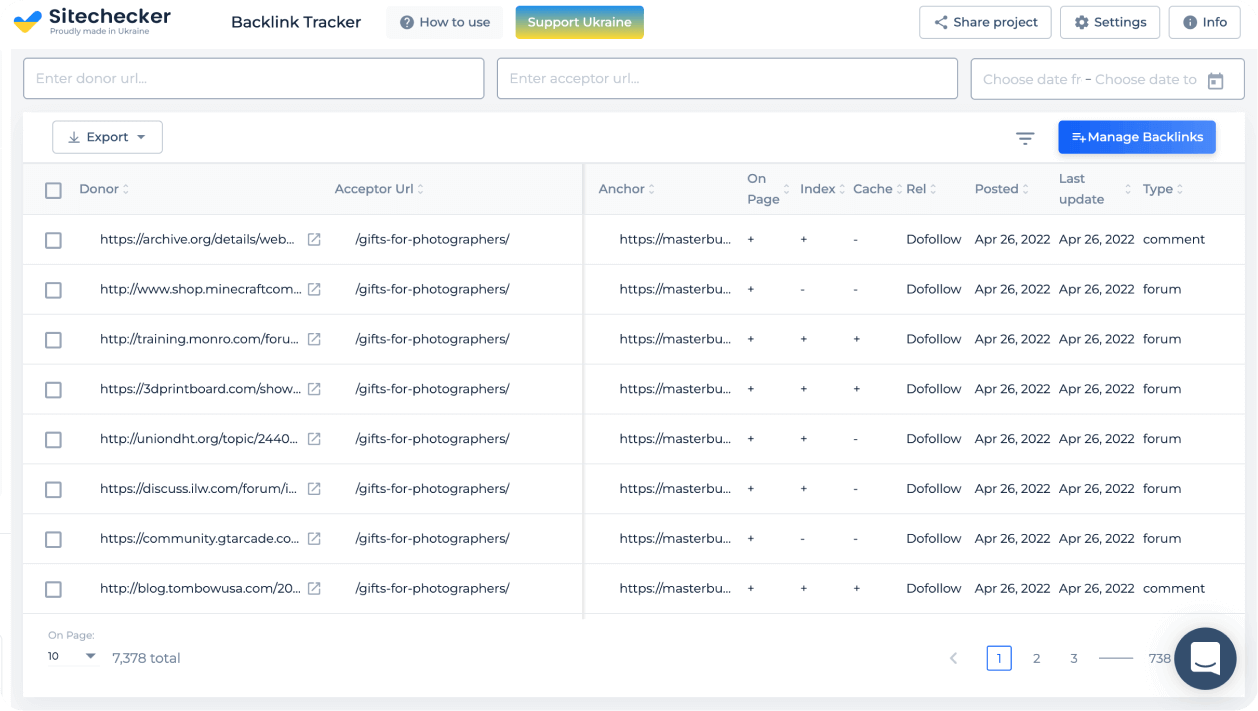
Practical Benefits for Webmasters and Content Creators:
- Holistic Website Assessment: Instead of juggling multiple tools, Sitechecker offers a one-stop solution for a broad spectrum of website evaluation needs.
- Actionable Recommendations: Beyond just identifying problems, Sitechecker provides practical solutions, ensuring you can implement changes that genuinely improve user engagement.
- User-friendly Interface: Even if you’re not tech-savvy, Sitechecker’s intuitive design ensures you can navigate its features with ease, making the optimization process smoother.
Summary
Understanding user engagement, particularly metrics like dwell time, has emerged as a crucial aspect in the digital content realm. Dwell time, which gauges how long a user interacts with a page after accessing it from a search result, serves as a potential indicator of user satisfaction and content relevancy. However, it’s distinct from other metrics such as bounce rate, which captures users leaving without further page interactions, and time on page, which measures the overall visit duration. To optimize these metrics, it’s essential to craft engaging introductions, avoid clickbait, keep content updated, and utilize tools like Sitechecker for comprehensive website analysis. Ultimately, while data offers valuable guidance, the core of improving engagement lies in delivering genuine value through high-quality content.



